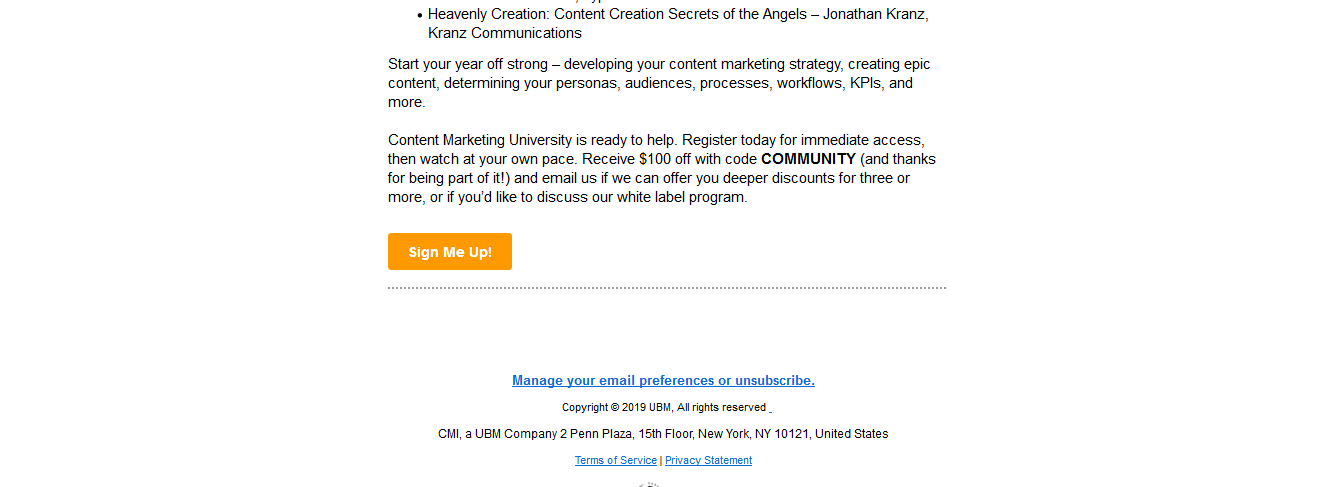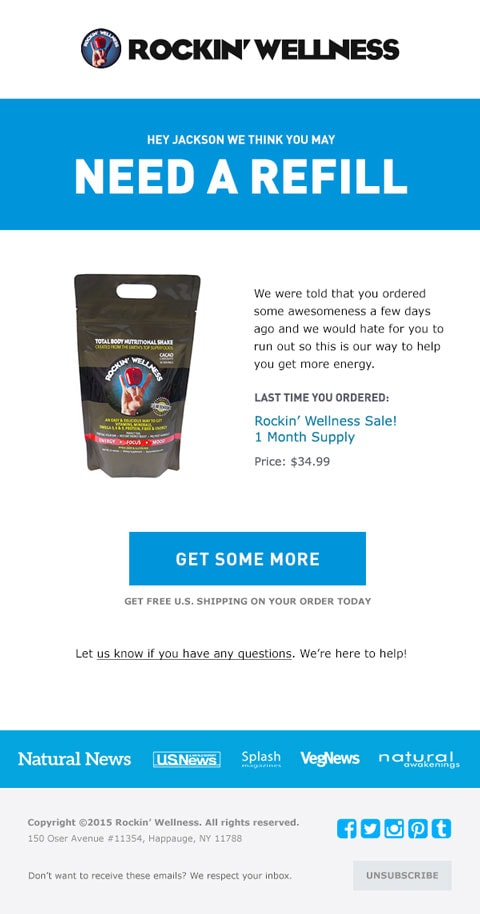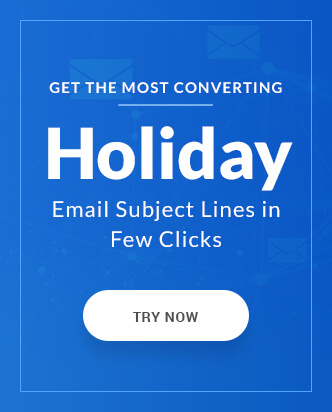In this age of technology, people’s actions are a goldmine of information. Be it searching for something, watching a display ad from the search term, visiting a website, or the interaction they have on a website, everything generates a plethora of information. How a marketer manages to put the data defines the success of their email marketing campaign.
You may be wondering where to look for the data, how to separate data from the noise, how to understand it, and use it in your email marketing campaign.
In this article, we shall explain what data-driven email marketing is, how it helps you grow, common mistakes while dealing with data-driven email marketing, and how to use data innovatively to improve your email campaigns.
What is data-driven email marketing?
Marketers started adopting emails as a marketing communication channel in the late ’90s. Due to this, emails became a channel for people to receive unsolicited marketing messages, and this lead to the implementation of various norms and country-specific laws. The purpose of these laws was to regulate marketing emails and turning email marketing into a permission-based marketing channel. So, people only subscribed to those brands that drew their curiosity, and marketers started using personalization as a tactic to retain subscribers. A good user experience via emails kept the subscribers loyal, and the contrary caused them to unsubscribe.
Hence, data-driven email marketing is all about using the data you already have and the data you can collect, through consumer interactions and engagements, to predict future behaviors. This benefits the subscriber as they get a customized experience in the emails, all thanks to personalization and segmentation.
Benefits of data-driven email marketing
The customers and marketers both enjoy the fruits borne from using data-driven email marketing. The subscribers get useful and relevant information that interests them and the marketer, i.e., you, gain a loyal customer that constantly engages with your emails and is qualified for conversion. We send out a weekly email newsletter that provides useful information about the different events of the email marketing industry & is tailored to the data collected (You can be a part of our list by filling the form below). The following are some of the benefits we have observed:
- The clarity in Communication: Marketing depends on creating relevant buyer personas based on the collected data. The more information you have at hand, the easier it becomes to segment your subscribers. This way, the subscriber will only receive emails about their interest (and some promotional emails related to their interests).
- Better personalization: From a better understanding of your audience, you can send the right message to the right audience at the most opportune time. Additionally, the right amount of personalization can strike the right chords and aid in better conversions.
- Lesser SPAM complaints: The level of refinement in your buyer’s persona helps you identify the correct audience, and when you approach them with something of their interests, the chance of being SPAM reduces. Moreover, the existing subscribers are going to be engaged as long as the email content interests them, and this can lead to a reduced churn rate.
- Multiple Channel Engagement: The engagement via the collected data is not just limited to emails. By providing a customized experience, based on the collected data, across all channels, you ensure consistent messaging that is aligned to subscribers’ interest and reaches them at the correct time.
Where marketers go wrong with data-driven marketing
- Not anticipating the data size: Right from the location, time spent on the page to the cursor movement of an individual visitor, all form of data is available with the help of the right tools. Most marketers tend to be overwhelmed by the size of the data collected and stick to the commonly used metrics and demographics. You need to break the data in smaller, manageable chunks and segregating the data that is valuable for your campaigns.
- Oversee everywhere; Focus nowhere: It is a common mistake when it comes to implementing data-driven email marketing. Data collection is not solely about creating various data points and tracking them. It is also about collecting the data and using it to leverage better email content as well as context. You need to distribute work and responsibilities such a way that you are focussed on collecting the relevant data and utilizing the data contextually.
- Inconsistent Data collection and analysis: Marketers sometimes tend to utilize the data collection activity until the demand exists for it in the next email campaign. Once the campaign is sent, data collection is put on a slow burner until needed again. It needs to be a continuous process that should be used to re-target customers, welcome new customers, and improve the experience for existing customers.
- Losing sight of the end goal: Collecting the highest amount of data is not the goal of a data-driven marketing campaign. Depending on what your end goal is, you need to align your data collection efforts. If the goal is ROI, the data collected should reflect the LTV of customers. If the goal is customer engagement, the data collected should reflect the links clicks, the request for quotation, form submission, etc.
- Only you are using the data: Marketing is a joint effort, and slack (not the app) from anyone can affect the performance. You need to educate your team about the actionable metrics, as well as how it is to be measured. Your team needs to understand the importance of the different metrics and associate them with business goals.
- Considering that it is too-late: Many of you may be wondering that is it feasible to implement data-driven email marketing into your strategies now. Marketers tend to avoid implementation owing to the fear of beginning from scratch. That is not the case as you have already been collecting data and need to understand how to leverage it better.
Making your emails data-driven
Implementing data into your email marketing campaigns doesn’t mean you need to start from scratch. You would surely need to make minor modifications, but nothing that will break the layout. Here are some of the ways that you can make your emails more data-driven.
A welcome email (or series) that collects demographic data
It is a universal agreement that welcome emails are to welcome a new subscriber to your mailing list, and it is an opportunity to gather information other than their name. You can offer an incentive such as a discount coupon or a downloadable resource and ask for demographic information such as location, interests, avg budget for their purchase, etc.
Broaden your vision to a multi-channel approach
As we stated earlier, data-driven email marketing can help other marketing channels, so it would greatly help you if you track customer interactions from those channels also. Some of the most common places to collect data from the metrics are:
-
Emails: Opens, Clicks, Conversions
-
Website: Number of visits, pages viewed
-
Landing page: Form filled, Downloads, Signups
-
Blog: Time spent, CTA clicked, Comments
-
Social Media: Engagements, Likes, Shares
-
Video: View times, Timestamp of avg viewer duration, Ads clicked
-
Display Ads: Clicks, Bounce
Create a central database
An email marketing campaign involves using multiple tools for different purposes. You should be using a CRM for storing customer information, an ESP to send the emails, a heatmap tool to monitor visits to the page, and a tool to monitor the analytics. Depending on how much you spend monthly, all the tools might be integrated into a single platform, or you use individual tools. Either way, it is essential that all the tools ‘talk’ to each other seamlessly, and the data is collected at a central point, i.e. CRM. This not only helps you track the progress from your email campaigns but also other touchpoints such as social media.
Map out how to utilize the data
When someone subscribes, you utilize the sign-up information to personalize the welcome email. To create further engagement, you offer them a freebie. Provided they download it, you send them a review email after a few days. Later on, you send them a link to a webinar that you are conducting that aligns with the subscribers’ interest. After a few days, you send them a link to the consolidated transcript of the webinar.
In the above email series, as you can see, the subscriber is provided customized experience based on their actions. You need to map out the way you shall utilize the data before you jump onto creating email campaigns.
Periodically offer subscribers to update preferences
Times change, and the needs of the subscribers may change. There is no way to sense that if you do not provide them a chance to change their preference. This helps the subscribers in only receiving the emails that they are interested in; while benefits you by improving email deliverability with reduced unsubscription rates. Learn about the importance of email deliverability and how to make your emails land.
In the example below by Content Marketing Institute, the email prominently displays a link for unsubscribing as well as changing the preferences.

Use only the effective data in your email by A/B test
You may predict what step the subscriber may take, but you cannot say for sure. That’s where the results of your A/B test will help you. By testing two variants of the same element in your email, you can pinpoint what works better for your audience. Progressively testing out multiple elements will grant you a practical template layout.
Utilize the demographic data to send one-off emails
Demographic data such as age, location, date of joining are premium data that is not only easy to collect but also great to personalize the email content around. Making your subscribers feel special on their birthday by sending a birthday greeting or reminding them about renewing the subscription to a product they purchase (as seen in the example below by Rockin’ Wellness) can make them feel special. This grows down the line and contributes heavily to the loyalty they have towards your brand.

Wrapping Up
As you may be aware by now, data-driven email marketing is not a new thing but only a better adoption of data in your emails. The effectiveness of your marketing success depends on the quality of the data collected and your implementation of it. You are not alone in this endeavor, our QeInbox team of experts is qualified in performing email template audit, and managing your campaign on your behalf to help you email better. Drop an email at info@qeinbox.com to ask for assistance.



